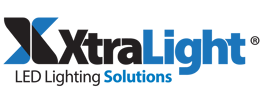
In sports, stadium lighting extends far beyond brightening up the playing field. These powerful luminaires, mounted at towering heights with precise beam angles, are the unsung heroes that ensure every game, match, or event is a spectacle to behold. From basketball courts to soccer fields, their radiant glow transforms the ordinary into the extraordinary. Stadium lighting, particularly LED technology, represents an illuminating revolution characterized by efficiency and technological prowess. However, it involves more than just lamp installation; it requires adherence to evolving standards in a rapidly advancing technological landscape. Thus, selecting the right manufacturer is pivotal.
But why does stadium lighting matter? It goes beyond visibility, encompassing enhanced safety, diversified revenue streams, and elevated fan experience. In this article, we will explore stadium lighting's critical facets, shedding light on key considerations for this vital investment.
YOU MIGHT ALSO LIKE: LED Parking Lot Lights
What are the factors to consider before buying stadium lights?
Before buying stadium lighting, there are several critical factors to consider for ensuring the right choice. These factors encompass various aspects, from the technical specifications of the lights to the reliability of the manufacturer and the practicality of the installation process. The following is a complete list of things to think about:
-
Beam Angle: The beam angle of the lights determines how the light is distributed across the field. A narrow-angle may result in uneven lighting, while a wide angle could reduce brightness. It is essential to find a balance that provides uniform illumination throughout the stadium.
-
Quality: Opt for high-quality lights that offer sufficient brightness and operate at a cool temperature. High-quality lights have a lower malfunction rate and tend to last longer.
-
Waterproof Rating: Ensure that the lights are waterproof to withstand adverse weather conditions, such as rain and humidity. This is crucial for both outdoor and indoor stadiums, as humidity levels can still affect indoor lighting.
-
Heat Dissipation: Adequate heat dissipation is necessary to prevent the lights from overheating, which can lead to damage. Look for lights with aluminum heat-sinking bodies, as advanced aluminum materials offer better heat conductivity.
-
Glare Ratings: Excessive glare can be disruptive to players and spectators. It is important to choose lights that minimize glare, creating a comfortable viewing experience for everyone.
-
Contractor Experience: Select a contractor with relevant experience in stadium lighting. Their expertise can help you select the right lighting system and ensure a successful installation.
-
Service and Maintenance: Timely service and maintenance are crucial, especially at stadium. Inquire about a contractor's service response time and their ability to provide maintenance to minimize disruptions.
-
Superior Chips: Opt for high-quality LED chips, as they offer reliable performance and have a lower rate of malfunction. While they may be more expensive upfront, they can save you maintenance costs in overall.
-
Luminous Efficacy: Consider the number of lumens produced per watt consumed, as this affects the efficiency of the lighting. LED fixtures are known for their high luminous efficacy, making them a suitable choice for stadium lighting.
-
Color Rendering Index (CRI): A higher CRI is preferable for stadium lighting, as it enhances visibility and color accuracy. Look for LED fixtures with a CRI of at least 80 for an excellent viewing experience.
-
Warranty: Ensure that the manufacturer or contractor offers a comprehensive warranty for both the products and services. A warranty provides peace of mind in case of any issues.
-
Company Background Checks: Verify the manufacturer or contractor's background, including their licensing and references. This helps ensure you are working with a reputable and reliable partner.
-
Understanding your Stadium: Before approaching manufacturers, have a clear understanding of your stadium's layout and lighting requirements. Providing detailed information will result in a more accurate lighting plan.
Products that are suitable for Stadium
-
Insurance: Understand the insurance coverage for both your stadium and the lighting installation. Ensure the manufacturer's business insurance covers any potential accidents or damages.
-
Multiple Quotes: Obtain written quotes from at least three different companies to compare prices and services. Be cautious of significantly lower bids, as they may compromise quality.
-
Ask Questions: Don't hesitate to ask detailed questions about the manufacturer's experience, licensing, subcontracting, and timelines. A reliable manufacturer will be transparent and address your concerns.
-
Detailed Contract: Request a comprehensive contract that includes project specifications, payment terms, and materials to be used. Legal review is advisable to protect your interests.
-
Budget: Set a budget and adhere to it throughout the project to avoid unexpected costs.
-
Precision Aiming: During the installation phase, precision aiming of floodlights is crucial. It helps to align the light precisely to specific aiming points, enhancing efficiency and effectiveness.
-
Visor for Light Control: To control spill or obtrusive light, that spills into surrounding areas, consider lights equipped with visors designed to trim excess upward light. This helps in achieving excellent control of spill light and limiting glare.
-
Light Control System: Implementing a good light control system can further reduce glare and spill light, enhancing the overall quality of the lighting.
-
Energy Efficiency: Evaluate the energy efficiency of the lighting system, as it directly impacts operating costs. LED lights are known for their efficiency, but consider the luminescent efficacy, which measures lumens produced per watt consumed, to determine efficiency within LED options.
-
Longevity: Opt for lights with a long-expected lifespan, particularly if they are installed at a height, to minimize maintenance efforts.
Conclusion
In conclusion, selecting stadium lighting is a substantial investment, and thorough consideration of the factors outlined in this guide will assist you in choosing the ideal lighting solution for your specific needs, enhancing the sports, and viewing experience.
For over 37 years, the XtraLight brand has been a symbol of lighting expertise, innovation, and unwavering commitment to customer satisfaction.
At XtraLight, we are proud of our dedication to keeping as much of the production process in the states as possible. While a small percentage of components that go into our LED fixtures are sourced from abroad, our entire product design, fabrication, assembly, and testing process reside at our facility in Houston, TX.

